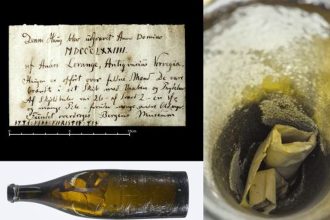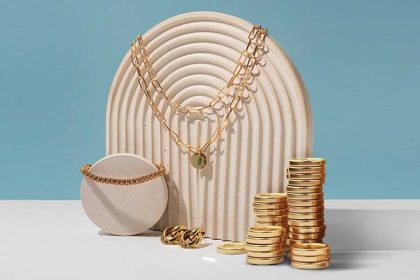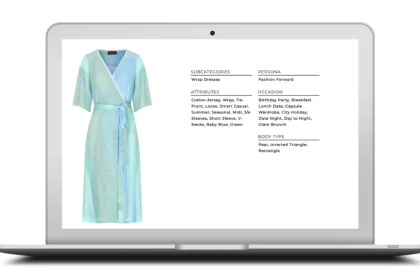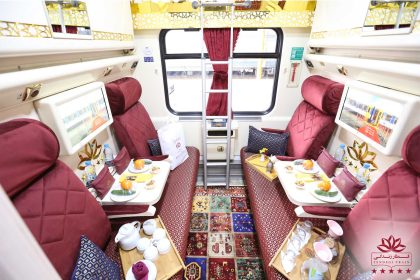In the world of fashion, luxurious and unique fabrics with a special role are woven on centuries-old electric or manual looms under strict supervision. Some of these fabrics are prepared and finished with a special printed design or with a variety of fabric making methods. The best example of luxury fabrics in the fashion show is displayed as luxurious haute couture fabrics with impressive appearance. In the past, luxury fabric was usually referred to rare fibers such as silk, Egyptian cotton and cashmere; But today, it is more dedicated to the elegance of design, fabric making with all kinds of stone embroideries, sequin embroideries and all kinds of lace decorations with special cuts. Also, the word luxury refers to the unique preparation and finishing of the fabric. Exclusive workshops of brands or textile factories produce these fabrics to the order of fashion houses and according to their design and taste. Some brands, in a certain period, market a special fabric as a seasonal trend; Or based on the trend of each season, they offer designs. Many other brands use their own fabrics that have become their signature over time. In the following article, we will examine the identification of iconic fabrics in different brands.
Chanel’s iconic tweed fabric
The sport-loving Duke of Westminster’s outfit for country functions inspired Chanel’s tweed fabric. This fabric originated from the thick Scottish and Irish tweed fabrics, which the farmers of those areas wore because of its durability and warmth against the cold winters. Gabrielle Chanel taught Scottish cloth manufacturers how to weave lightweight tweeds. Chanel’s unique look at tweed fabric – a fabric that was not generally considered feminine – turned it into a feminine fabric with a new dimension of color richness, softness and softness. The most unique collection of tweeds with bejeweled embroidery, camellia, lion, sun and star with seductive metallic thread is presented in 2020 with 64 looks.
Gazar fabric invented by Balenciaga brand
Gazar fabric was a chic fabric that was produced exclusively for Cristobal Balenciaga. One of the features of this fabric is its volume creation and easy shaping. This fabric was one of the stars of the Cristobal Balenciaga collection in the legendary wedding dress collection of 1967, which appeared with simple models and clear, curved and pure lines. It was from Balenciaga’s talent that he was able to reveal the potential of Gazar fabric.

Tom Brown’s signature flannel fabric
Gray flannel is a special signature of Tom Brown collections, which is produced from soft wool fibers. Tom Brown’s four-season jacket includes a wide range of gray colors. It is said that these clothes are reminiscent of the Chrysler building from the 1930s. This building can be seen in a single color next to the colorful minarets. Some of his designs are simple or with four horizontal stripes. Some other fabrics of his clothes are designed by the method of fabric making, which show a special image by the juxtaposition of various types of fabric texture with the patchwork technique.

Tartan fabric, Vivienne Westwood’s special design
Wayne Westwood not only used traditional tartans in his clothing designs; He also designed and registered his own tartan fabrics. The McAndreas tartan is the most distinctive tartan produced by Westwood, produced as part of the Anglonania collection in 1993. This fabric was designed, woven and registered in Scotland in honor of her partner and husband Andreas Kronthaler. During his career, he produced more tartans and used them in his collections.

Fabric making, signature for brands
Butgaonta woven leathers
Bottgaonta’s signature is the brand’s woven leather fabric. Most of Butgaonta bags are made of nappa leather. This type of leather conveys the classic feel and quality expected from a brand. Nappa leather is one of the most expensive leathers; Because it is obtained from the upper layer of the skin, which is softer and more durable than other parts of the skin. Nappa leather is a favorite of many leather retailers due to its high quality.

Pleated and origami (origami) brand Issey Miyaki
Issey Miyake’s pleated collection was launched almost 20 years ago. This collection was produced from 100% polyester fabrics, which have so-called memory. These fabrics were pleated and cut through an innovative process. The fabrics were pleated three times to the required size and then made into full size garments. In this technique, the fabric is sandwiched between two layers of paper with a special geometric or simple design, pleated and placed under the pressure of a heat press. Issei Miyaki’s origami clothes are one of the most famous origami works in the world, which are derived from the art of Japanese paper folding. Clothes appear in the form of woolen jackets, skirts, shirts or elasticated trousers with permanent pleats and ties.
Patterning, the characteristic of every brand
Familiar Burberry pattern, lining for gabardine trench coats
Burberry, the British luxury brand, is one of the most popular luxury brands in the market since 1800. This brand was popularized by Thomas Burberry due to the production of the popular waterproof gabardine fabric. In the 1920s, the company introduced a distinctive tartan check and used it in the lining of its popular trench coats. Today, this pattern is considered one of the most recognized fashion icons. The design is the famous Berber checkered pattern with a cream and white background with red and black lines. This design is derived from a fabric design from the Cross Hills area near Keighley, a historic Berber home of the 1880s.

Dior logo pattern and cannage pattern
The pattern of the Dior logo, which Maria Grazia Chiuri has used abundantly in the collections of this brand; It has a very long history. Marc Bohan, creative director of Dior from 1961 to 1989, designed this pattern as the symbol of the Dior collection. This oblique pattern was first used on a bag from the fashion collection in 1969. Since then, this pattern appeared more on the luggage of the Dior fashion house, as well as the floor and stairs of the Dior boutique in Paris. Another pattern of this brand is Dior’s cannage pattern, which was derived from an old technique for rattan weaving on the frame. Cannage was first used on chairs and chair backs throughout Western Europe in the mid-18th century during the reign of Louis XV. Nearly two centuries later, Christian Dior launched his first collection of 18th-century Cannage chairs, eventually using the pattern as a decorative motif for Eau Fraiche. In the following years, Dior designers returned to this pattern, which was often used to design clothes, accessories, especially bags and decorations. In the 2024 men’s collection, Kim Jones used this pattern in the most distinctive way to design the Dior men’s collection.

Jean-Paul Gaultier and the Maritime Corridor
The blue and white stripes of the Breton shirt were reserved for French sailors and sailors in the mid-19th century. Coco Chanel brought it back to the world of fashion at the end of World War I; But Jean-Paul Gaultier used this pattern many times in his collections during his 40 years of professional work. Although today stripes are known as one of the simplest patterns in clothing; But there was a time when striped clothes were reserved for the marginalized and the outcasts. In the Middle Ages, wearing striped clothing was often seen as reserved for criminals, lunatics, or people with mobility impairments. Jean-Paul Gaultier himself used striped shirts many times in different situations. He used this design for the first time when he designed the bottle of Lemille men’s perfume. The mentioned design was derived from his desire for classic sailors’ clothing, which was rooted in his childhood memories.

Louis Vuitton and the most famous flower pattern in the world
The logo of this brand dates back to 122 years ago. L and V intertwined with a four-leaf flower pattern is a symbol of pleasure and happiness, which was designed by Georges Vitan – the son of Louis Vitan – in 1896. Now, after 120 years, the logo of this brand has become one of the most recognized logos in the world. Louis Vuitton bags are often made of leather or have leather decorations such as leather handles. Another type of fabric used to produce Louis Vuitton bags; It is coated canvas with leather trims and handles. The famous Louis Vuitton logo is printed in dark brown and has a light brown checkered dial with a leather-like handle; But it is not made of leather. This coated canvas is made of 100% cotton, which is covered with a plastic called polyvinyl chloride.

One of the basic steps in branding is creating a clear identity for the brand, one of the pillars of which is the type of fabric or the remarkable design of the product. By creating a mental image through visual elements, the brand name is established in the audience’s mind. Designing special fabrics or using a different type of fabric, in addition to the key and functional role of fabric in clothing, is a factor to identify the final product in the audience’s mind. Considering this issue, Iranian brands can also achieve an increase in sales in international markets by relying on identity building and creating a special image of the product in the mind of the audience.
References:
www.theconversation.com
www.burberrycareer.com
www.vouge.co.uk
Latest Passing over countries : Spain | Dominica | United Arab Emirates
RCO NEWS

















